Washing machines-semiautomatic: features and tips for choosing
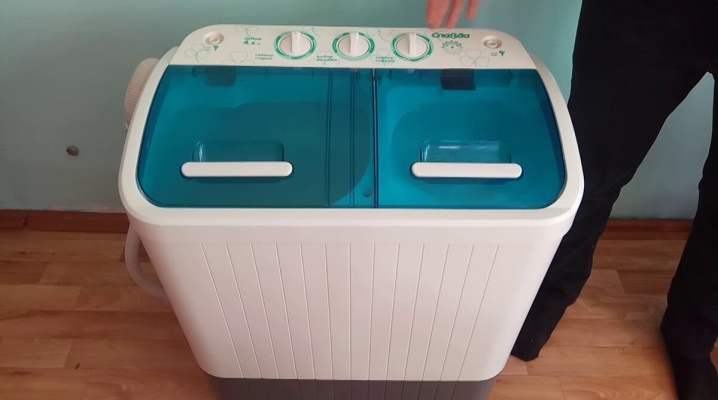
Semi-automatic washing machines are most relevant in rural areas, in summer cottages and where there are still problems with water supply and sewerage. In addition, such a model is chosen by owners who do not need unnecessary problems with the complex electronics of automatic machines, as well as additional costs for dubious functions and programs in them. Let's take a closer look at what are good semi-automatic models of washing machines, what their disadvantages are, how they differ from automatic machines and which models are considered the best for choosing.
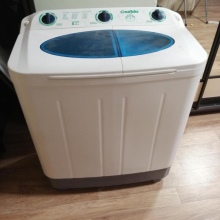

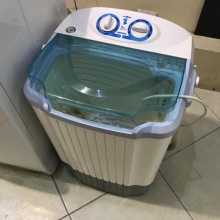
What it is?
A semi-automatic washing machine is a household unit for washing linen in a semi-automatic mode. The newest models of such machines usually have in their arsenal all the basic functions necessary for high-quality washing and spinning of all types of materials from which modern clothes, bedding and underwear, curtains, curtains, blankets, light blankets, towels, and so on are made. The unit looks quite compact and modern, it works reliably for a long time, and is unpretentious in maintenance. True, there are simpler options - without a centrifuge for wringing out linen and a pump for draining dirty water, but this, one might say, is already "yesterday", outliving its last years.

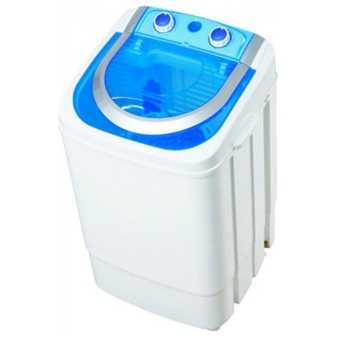
These machines have their own advantages, due to which they remain as relevant as their fully automatic counterparts. First of all, it is very important that they do not require a connection to the water supply, with which there are problems in most rural areas of our country. We can say that semi-automatic machines are the main helpers for rural housewives in maintaining cleanliness of clothes and other linen in their families. It is in the villages, villages and dachas that they have found their greatest application. The second advantage is the affordable price of automatic machines, even for families with low incomes. At the same time, they are not inferior to automatic machines in terms of the volume of load of linen for one wash.
The layout of semiautomatic devices is usually as follows: two compartments in one case, one of which is used for washing the laundry, and the other for its subsequent spinning. In budget models that do not have a centrifuge, of course, there is no second compartment.
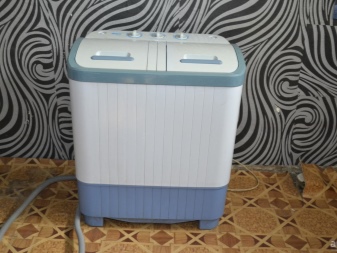
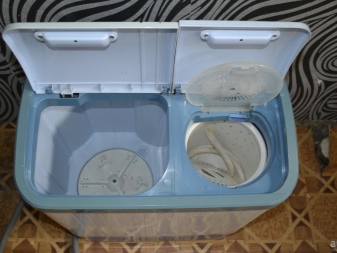
How is it different from automatic models?
Of course, automatic machines are more attractive models of this type of household appliances, since the entire cycle of its operation takes place without human intervention. You just need to turn on the machine and set the required washing mode. And after the machine has washed, rinsed and wrung out the laundry, hang it up for final drying.
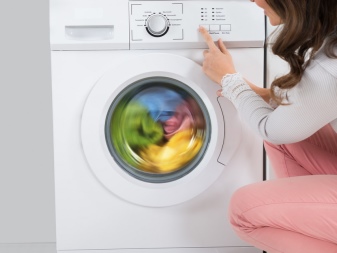
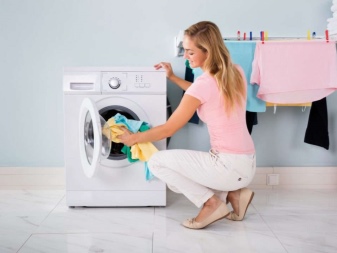
It will be possible to move away from the semiautomatic device only for a while, while the washing mode is in progress. And for washing, you still need to manually pour water. Further - after washing - you will have to drain the dirty water, pour clean water again and turn on the machine for rinsing. Then manually transfer the laundry to the centrifuge compartment and spin it. It will be good if the model of the semiautomatic device turns out to be with automatic water heating. If there is no such function, then the water will have to be heated independently on a gas or electric stove.
Working with a semiautomatic device is also quite time consuming, but still not so difficult when compared with washing and spinning clothes by hand. The described processes, which must be carried out by hand, are disadvantages of semi-automatic washing machines. They are also the main difference that exists between semiautomatic devices and their automatic counterparts.
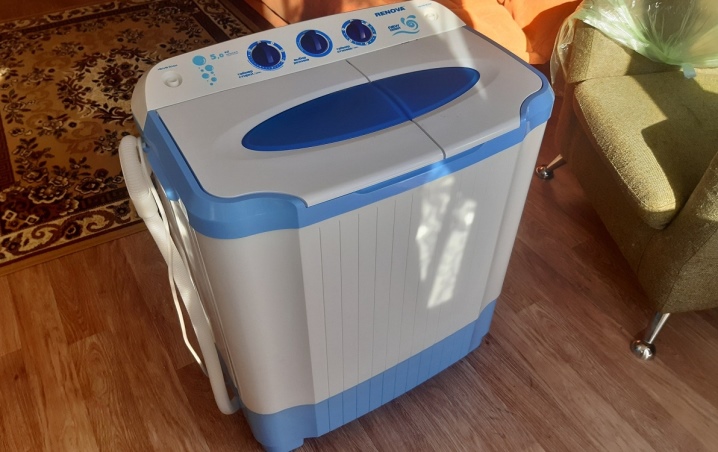
Views
There are activator and drum types of semi-automatic washing machines. What are the differences between them, we will consider further.
Activator
These semi-automatic machines are considered more reliable and durable. Their working element is an activator (rotating ribbed circle), installed at the base of the loading chamber, where washing takes place. This is exactly how the first hand-spinning washing machines were arranged, which were used by our mothers and grandmothers, starting from the middle of the last century.
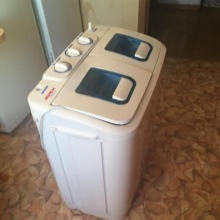
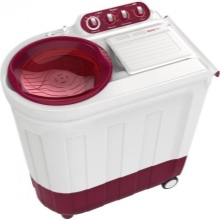
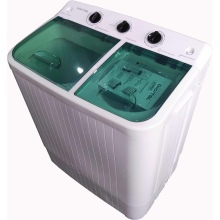
The principle of their operation is quite simple: an electric motor rotates the activator, and the latter creates a cycle of water mass, in which laundry and detergent are involved. According to the given program, the rotation cycles of the activator are periodically reversed. (reverse). By changing the direction of rotation, the laundry is better washed from dirt. In addition, it turns in the other direction, if before that it was twisted into a bundle under the action of the water cycle, which also contributes to better wetting and penetration of detergents into the structure of the fabric. Loading of linen in such machines is done through the top cover.
Experts consider this washing option to be the most gentle in relation to the fabric from which the clothes and bedding are made, since the fibers are subjected to less stress than in drum machines.
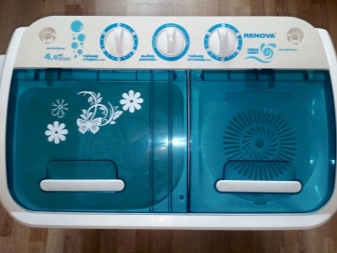

Drum
More modern washing machines are designed to wash clothes and laundry inside a rotating drum. Drum units can have either side loading of things through a hatch located on the front side of the machine body, or vertical, as in the activator models. The principle of operation of this type of equipment is as follows:
- first, a perforated drum made of stainless steel and in the form of a cylinder is loaded with linen through the hatch and tightly closed;
- then fall asleep (pour) into the dispensers (if any) detergents;
- fill the compartment containing the drum with linen with hot or cold water;
- include a washing program;
- the drum begins to rotate first in clean water, then a washing solution is added according to the program;
- the laundry is washed before the end of the timer cycle;
- then the laundry must be rinsed, for which you need to change the water to clean;
- after that, the laundry is transferred to the spin compartment and the corresponding program is started.
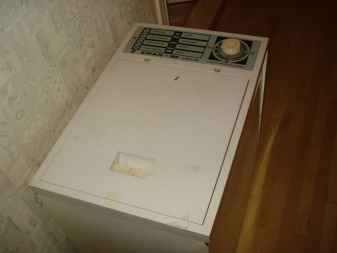
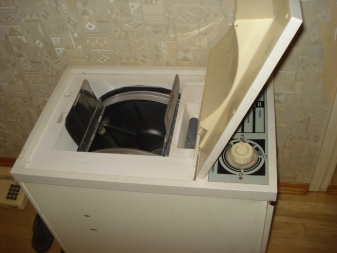
It should be noted that after washing, the laundry must be unfolded and carefully folded into the spin compartment, otherwise it will not be possible to get a good result - the laundry will remain too damp.
How to use it correctly?
The rules for using a semi-automatic washing machine depend on the model. They are:
- with one tank;
- with two tanks;
- heated water;
- without heating.
In models with one tank, washing and spinning of wet laundry are performed in one container. But before spinning, the laundry will need to be rinsed in order to clean it of soapy water and the remnants of dissolved dirt. Rinsing can be done either in the same container of the machine where the washing took place, manually changing the water, or use a separate container for this (for example, a basin, tub, trough).
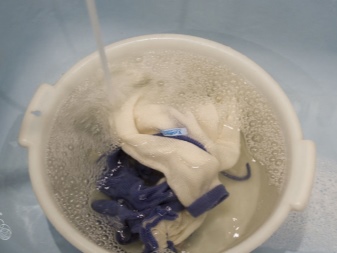
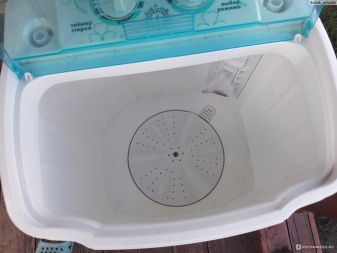
But more often, semi-automatic models with two compartments are produced and bought. One of the compartments is for washing and rinsing, and the other is for spinning. But here, too, continuous programs do not exist, as in fully automated washing machines: you have to interrupt the operation of the unit to change the water between washing and rinsing the laundry, between rinsing and spinning (you need to manually move wet things from the washing tank to the drying compartment).But even in these machines, the rinsing process can be carried out outside the unit - in a trough or other suitable container.
This is especially true with a large volume of washing, when time savings become valuable, rather than labor costs.
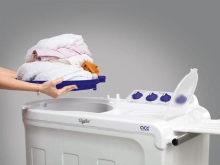
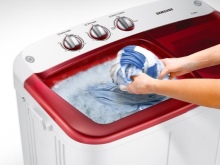
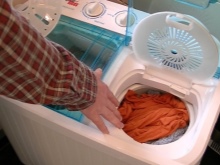
In versions with automatic water heating with their own electric heaters, the hostess has less worries with additional tanks, pots and other containers necessary to ensure the washing process with hot water. Filling all kinds of tanks, cisterns and pots with water, as well as pouring it from one container to another, greatly complicates the work, so it is better to choose a machine with its own heating element.
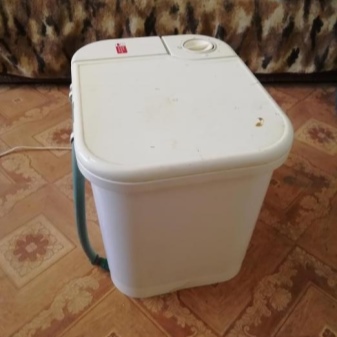
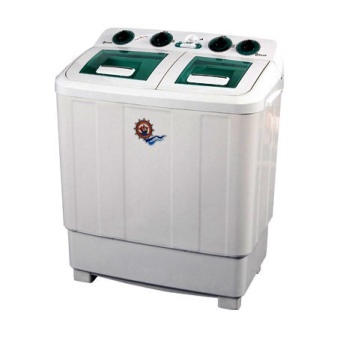
In order to use the semiautomatic device correctly and not to ruin the unit prematurely, it is imperative to study the equipment operating instructions. Let's describe the average rules for using a semi-automatic machine (omit those operations that cannot be performed on the model you have chosen).
- Before washing, you need to sort the laundry into white and colored, cotton or wool, delicate and ordinary, according to the degree of soiling.
- Heavily soiled items should be soaked in advance, perhaps even with detergent.
- Fold the laundry into the drum (if the model is side-loading).
- Pour as much hot or cold water into the washing compartment as is needed for the prepared amount of laundry or is required according to the instructions). If the water is cold, then turn on its heating from its own heating element.
- Pour in or pour in the detergent solution in the amount specified in the instructions, depending on the volume, type and degree of soiling of the fabric.
- Load the laundry into the compartment if the load is vertical.
- Connect the unit to an electrical outlet and set the wash timer for the required period.
- After the end of washing, the dirty water is completely drained. In this case, the laundry must be removed from the compartment.
- Pour fresh water, reload the items you just washed and start rinsing (or do it manually outside the machine).
- After rinsing, unfold rolled laundry and fold gently into the centrifuge compartment.
- Switch on the spin timer. It is recommended that things made of delicate materials do not dry in a centrifuge, as its high speed can adversely affect the structure of the fabric.
At the end of the spin cycle, remove the laundry from the compartment and hang it on the final dry.
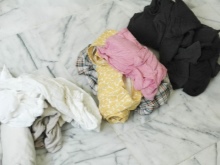
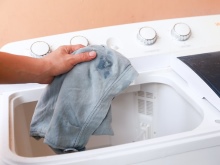
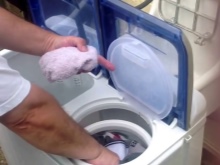
What malfunctions can there be?
And although semi-automatic washing units are more durable than their automatic counterparts, they are also subject to some typical breakdowns over time. Consider these malfunctions and briefly eliminate them, if repair is possible and spare parts are available.
The drum does not spin when the engine is running
The belt drive may break, jump off or slip due to its loosening (if the model of the unit has just such a drive). Belt replacement or replacement will be required.
Besides, one of the reasons may not be a breakdown at all, but a banal overload of the drum with linen, because of which the belt only slips, unable to move the drum. Before you climb to the engine and its transmission, free the drum from the laundry and try to start washing without it. It is quite possible for a foreign object to hit and the drum jammed. In this case, you should find and remove the trapped object.
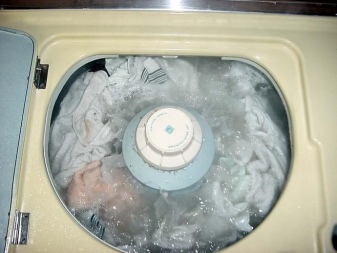
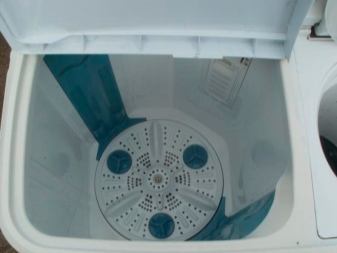
And also the imbalance of the drum during spinning is possible due to the knocking down of wet laundry into a lump on one side. As a result of this, a blockage of the spin mode may occur. You will have to straighten the laundry in the drum, distributing it evenly.
Over time, the drum bushings break, causing it to jam or difficult to rotate. This can be determined by the sound of the rotation, it will change. The car should be returned for repair.
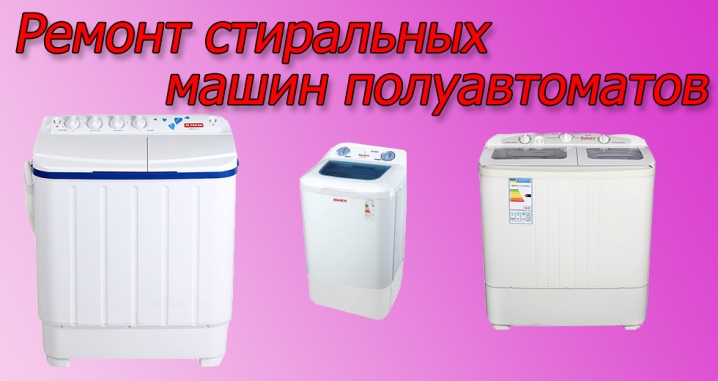
The engine does not rotate well
If the engine itself rotates with difficulty, then the reason lies either in the overload of the compartment with linen and water, or the engine bearings have collapsed, or a malfunction in the electrical part.Free the machine from excess laundry and try turning it on again with only water. Leave the bearing replacement or electrical repairs to a specialist. Sometimes it is more advisable to purchase a new engine or even a different typewriter.
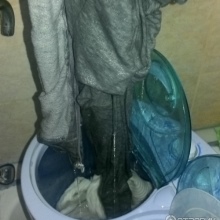
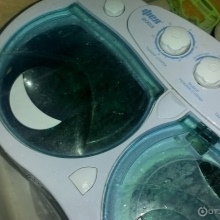
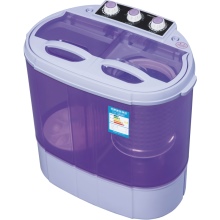
Dirty water is not pumped out after washing
Here the reason, most likely, is a malfunction of the pumping pump. It is removed from the case, repaired or replaced with a new one.
The unit does not turn on at all
Most often, you need to look for the root cause of such a failure in the wiring, outlet, contacts even before entering the electrical circuit of the washing unit. Often the power button on the control panel also fails. Sometimes the electric motor burns out, the wires of the internal wiring close.
External faults can be found and eliminated on their own, while internal ones are better diagnosed and corrected in the workshop.
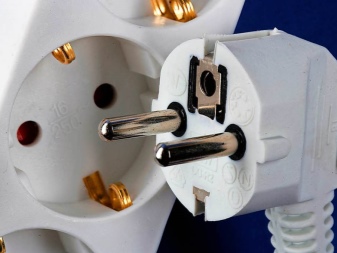
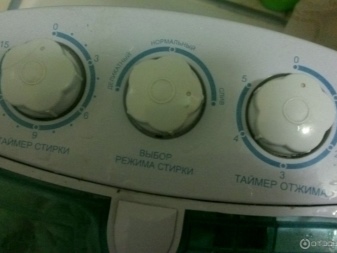
Top Models
Here is a list of the best models of modern semi-automatic washing units.
- Model "Fairy SMP-40H". Loading of linen - up to 4 kg. It has 3 simple programs with adjustment knobs, the evacuation pump perfectly squeezes out the laundry at high centrifuge speeds. A compact option for home and summer cottages, where there are no extra squares of space.
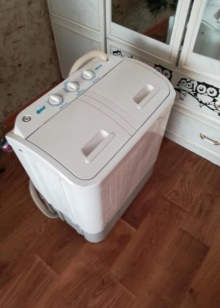
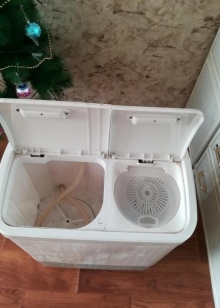
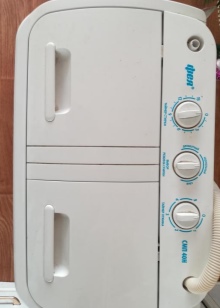
- Renova WS-50PT. Also a compact machine, like the previous one, but slightly larger. You can load 5 kg of laundry per wash. Three programs: normal wash, delicate wash and dirty water drain.
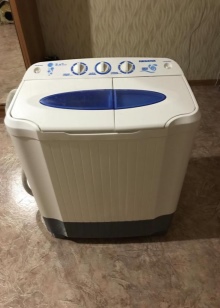
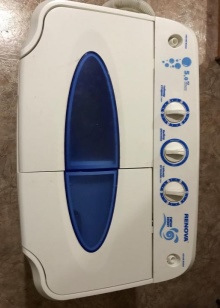
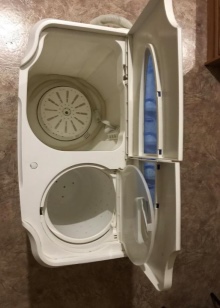
- Zanussi ZWQ 61216. A very decent semi-automatic washing machine with 8 automatic washing programs - from intensive to gentle and delicate. Spins laundry, with heated water, loading up to 6 kg of laundry, option to delay start, protection against leaks.
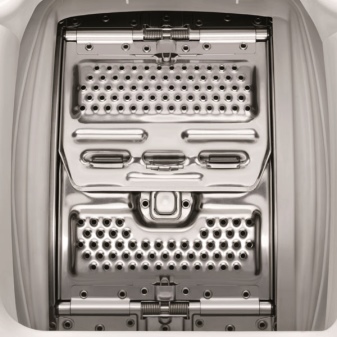
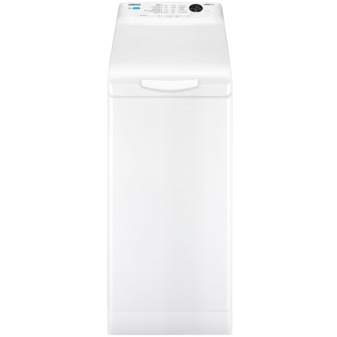
- Optima. The range of these semiautomatic washing machines is quite wide and popular. Mainly it has a two-section vertical loading structure. The capacity of the MSP-80ST model is 5 kg. Spin speed 1350 rpm. It has two wash programs - basic and delicate. The body is made of durable plastic.
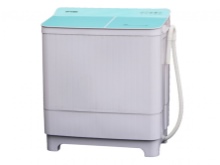

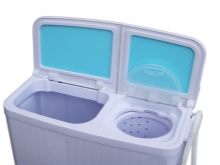
Selection criteria
To select, use the following criteria:
- how often and how much is washed (this will help determine the loading parameters of the washing machine);
- the maximum volume of loading the machine with linen;
- unit dimensions and the possibility of its installation in the planned location;
- determine the required list of functions and programs;
- full wash cycle time;
- resource consumption (electricity and the amount of water for washing);
- strength of the body material;
- reliability of the manufacturer;
- the presence of positive reviews about the selected model;
- cost of equipment.
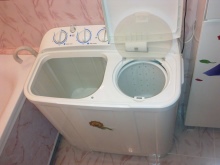
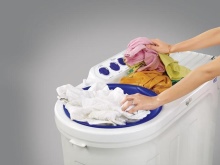
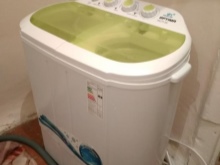
Selection recommendations from experts
- It is better to choose models of semi-automatic washing machines of the activator type: they are more reliable and durable. In addition, activator wash has less effect on the texture of the fabric.
- If the family is small (2-3 people), it will be enough to choose a Feya typewriter with a load of up to 4 kg, and if there are more people, options with a Slavda brand centrifuge with a vertical load of up to 7-8 kg of laundry per one washing.
- Energy consumption preference should be given to cars of class "A" and better - with heated water.
- If the family has small children, choose units with a lock against accidental button presses.
- It will be useful to have leakage protection, like the Zanussi ZWQ 61216 model.
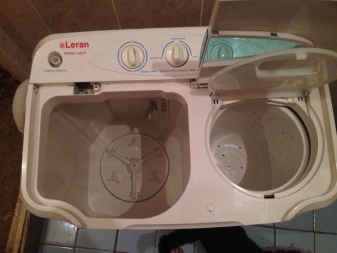
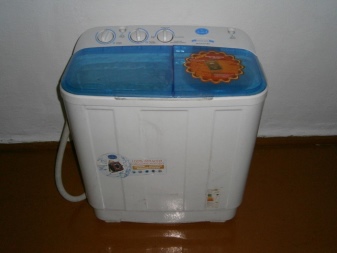
Instructions for the design and operation of the WS-40PET semi-automatic washing machine in the video.













During the spin cycle, the water does not rise into the washing tank, you have to drain it into the basin and pour it back into the washing tank from the basin. No blockages, checked. Air locks come out of the hose and then everything is squeezed out normally. How do I fix this problem?
Elena, usually the reason is a clogged drain path - a hose or a pump.The hose can also be damaged or pinched somewhere. If the impeller breaks down, then the drain pump will work much less efficiently, or even stop draining water altogether. Sometimes the cause of a poor drain is laundry that has entered the drain hole of the centrifuge.
Can jackets be washed in a semiautomatic machine?
Of course, you can, if you choose the right temperature, mode, powder and do not add other things when washing.
The comment was sent successfully.